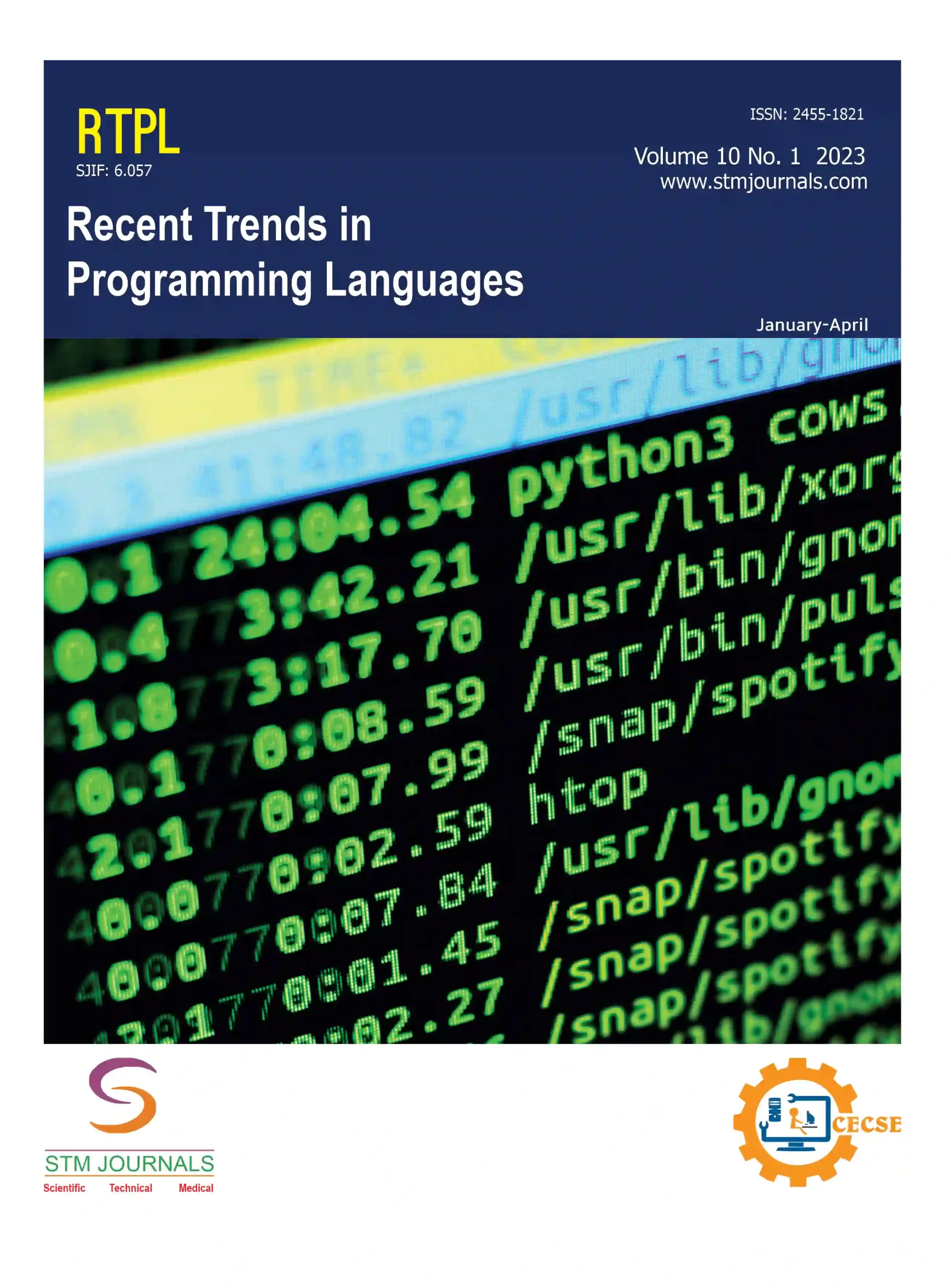[{“box”:0,”content”:”[if 992 equals=”Open Access”]
Open Access
n
[/if 992]n
n
n
n
n
- n t

n
Yash Tyagi, Neha Yadav
[/foreach]
n
n
n[if 2099 not_equal=”Yes”]n
- [foreach 286] [if 1175 not_equal=””]n t
- Research Scholar, Research Scholar, MCA, Thakur Institute of Management Studies, Career Development & Research (TIMSCDR), Mumbai, MCA, Thakur Institute of Management Studies, Career Development & Research (TIMSCDR), Mumbai, Maharashtra, Maharashtra, India, India
n[/if 1175][/foreach]
[/if 2099][if 2099 equals=”Yes”][/if 2099]nn
Abstract
nIn this paper, we studied data analysis using the Python programming language. The fundamental steps in data analysis, such as cleansing, converting, and modelling of data is briefly explained in this paper. In order to come up with good results, data analysis is required. Python has been used by us for data analysis. This language is interactive, interpreted, and follows an object-oriented programming paradigm. It is open source and comes with a variety of libraries, including MAT plotlib, Seaborn, and Pandas. In this study, we focus primarily on the insights that might be discovered through exploratory data analysis of an existing dataset. The data from the dataset will be analysed graphically using various Python libraries and functions. The “World Population” dataset is used in this analysis to examine and extract different data in both numerical and visual form.
n
Keywords: Data Analysis; Exploratory data analysis; Pandas; Seaborn; Matplotlib
n[if 424 equals=”Regular Issue”][This article belongs to Recent Trends in Programming languages(rtpl)]
n
n
n
n
n
n
n[if 992 equals=”Open Access”] Full Text PDF Download[else] nvar fieldValue = “[user_role]”;nif (fieldValue == ‘indexingbodies’) {n document.write(‘Full Text PDF‘);n }nelse if (fieldValue == ‘administrator’) { document.write(‘Full Text PDF‘); }nelse if (fieldValue == ‘rtpl’) { document.write(‘Full Text PDF‘); }n else { document.write(‘ ‘); }n [/if 992] [if 379 not_equal=””]n
Browse Figures
n
n
n[/if 379]n
References
n[if 1104 equals=””]n
[1] Adelman, Irwin. An Econometric Analysis of Population Growth.
[2] Sahoo, K., Samal, A. K., Pramanik, J., Pani, S. K. Exploratory Data Analysis Using Python.
[3] McKinney, Wes. Python for Data Analysis: Data Wrangling with Pandas, NumPy, and IPython.
[4] Idris, Ivan. Python Data Analysis. Packt Publishing Ltd, 28 Oct. 2014.
[5] Pokrovskii, Vladimir N. Econodynamics : The Theory of Social Production. Cham, Switzerland, Springer, 2018.
[6] Jackson L. Scripting Solutions: Python at Your Service. Hire Python Developer. 2023. Available from: https://hirepythondeveloper.com/python-scripting-solutions/
[7] Justin Beals . Aicpaconferences.com. 2024 . Available from: https://aicpaconferences.com/b/sp/justin-beals-58305
[8] Arif Z. Building the Future with Supervised Learning: Unleashing the Potential of Labeled Data . Medium. Medium; 2023. Available from: https://medium.com/@mr-zeeshan-arif/building-the-future-with-supervised-learning-unleashing-the-potential-of-labeled-data-3f10624ca48f
[9] Bologna M, Aquino G. Deforestation and world population sustainability: a quantitative analysis. Scientific reports. 2020 May 6;10(1):7631.
[10] Gerland P, Raftery AE, Ševčíková H, Li N, Gu D, Spoorenberg T, Alkema L, Fosdick BK, Chunn J, Lalic N, Bay G. World population stabilization unlikely this century. Science. 2014 Oct 10;346(6206):234-7.
nn[/if 1104][if 1104 not_equal=””]n
- [foreach 1102]n t
- [if 1106 equals=””], [/if 1106][if 1106 not_equal=””],[/if 1106]
n[/foreach]
n[/if 1104]
nn
nn[if 1114 equals=”Yes”]n
n[/if 1114]
n
n
n
n
n
| Volume | 11 | |
| [if 424 equals=”Regular Issue”]Issue[/if 424][if 424 equals=”Special Issue”]Special Issue[/if 424] [if 424 equals=”Conference”][/if 424] | 01 | |
| Received | February 29, 2024 | |
| Accepted | April 3, 2024 | |
| Published | April 4, 2024 |
n
n
n
n
n
nn function myFunction2() {n var x = document.getElementById(“browsefigure”);n if (x.style.display === “block”) {n x.style.display = “none”;n }n else { x.style.display = “Block”; }n }n document.querySelector(“.prevBtn”).addEventListener(“click”, () => {n changeSlides(-1);n });n document.querySelector(“.nextBtn”).addEventListener(“click”, () => {n changeSlides(1);n });n var slideIndex = 1;n showSlides(slideIndex);n function changeSlides(n) {n showSlides((slideIndex += n));n }n function currentSlide(n) {n showSlides((slideIndex = n));n }n function showSlides(n) {n var i;n var slides = document.getElementsByClassName(“Slide”);n var dots = document.getElementsByClassName(“Navdot”);n if (n > slides.length) { slideIndex = 1; }n if (n (item.style.display = “none”));n Array.from(dots).forEach(n item => (item.className = item.className.replace(” selected”, “”))n );n slides[slideIndex – 1].style.display = “block”;n dots[slideIndex – 1].className += ” selected”;n }n”}]


